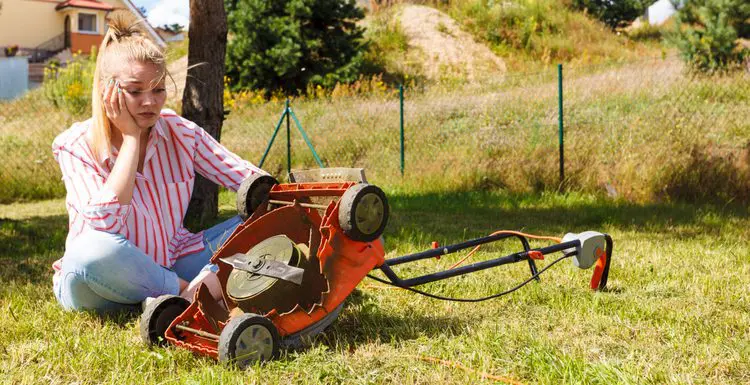If your lawnmower won’t stay running, don’t stress—there’s likely a simple at-home solution.
This article covers common causes for why a lawn mower won’t continue to run, quick fixes, and when to contact a professional.
Lawn Mower Won’t Stay Running?
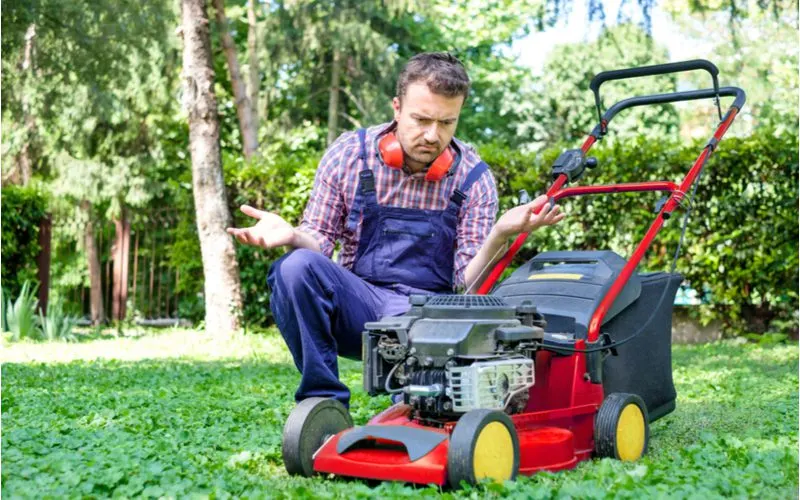
Tommaso79/Shutterstock
Does your lawnmower start only to sputter and fail? It might be stalling for one of the following reasons:
- Air filter that is clogged
- Old fuel in the tank
- Dirty carburetor
- Faulty or unclean spark plug
Luckily, you can often troubleshoot these issues from the comfort of your own yard.
How to Keep Your Lawn Mower Running
Follow the steps below to find the root cause of your sputtering lawnmower.
1. Replace Air Filter
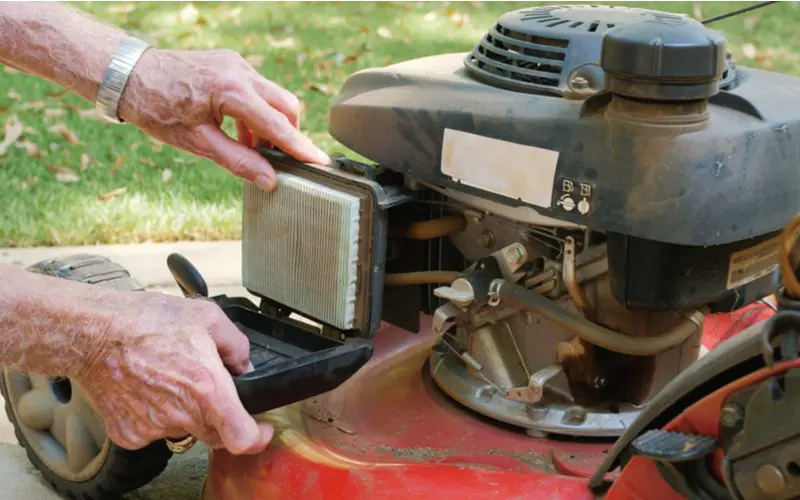
The Toidi/Shutterstock
Dirty air filters are common culprits for stalling lawnmowers. Filters clogged with dirt and debris restrict airflow to the engine. Without a proper air-to-fuel ratio, the engine cannot run.
Fortunately, air filter replacement is a painless task.
- Locate the filter. Most filters sit atop or beside the engine in a black casing.
- Unscrew and open the filter casing. Remove the filter and wipe dirt from the housing.
- Slide in the new filter and resecure the cover.
If your lawnmower still doesn’t stay on, contemplate when you last used it. It might require fresh fuel!
2. Drain and Refill Fuel
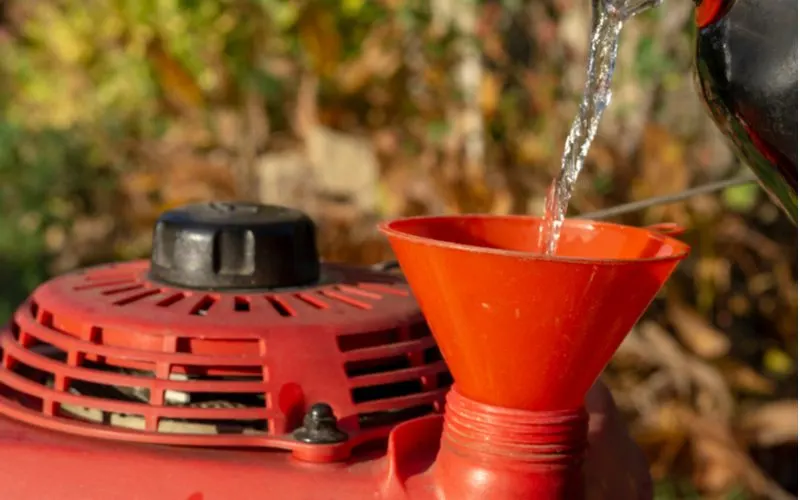
Gabor Tinz/Shutterstock
We’ve all neglected our lawn, especially when snow covers the ground. Unfortunately, winter condensation pollutes fuel sitting in your unused mower. Add a fuel stabilizer before storing the machine to prevent issues.
If your mower sits without a fuel stabilizer, the gas evaporates into a sticky residue. Once you run the lawnmower, gummy debris clogs important components, such as the carburetor.
Simply adding fresh fuel doesn’t fix the problem. Instead, empty or siphon out all the gas, then replace the fuel filter. Once that’s done, fill the tank with fresh fuel. The carburetor will require your attention next.
3. Clean the Carburetor
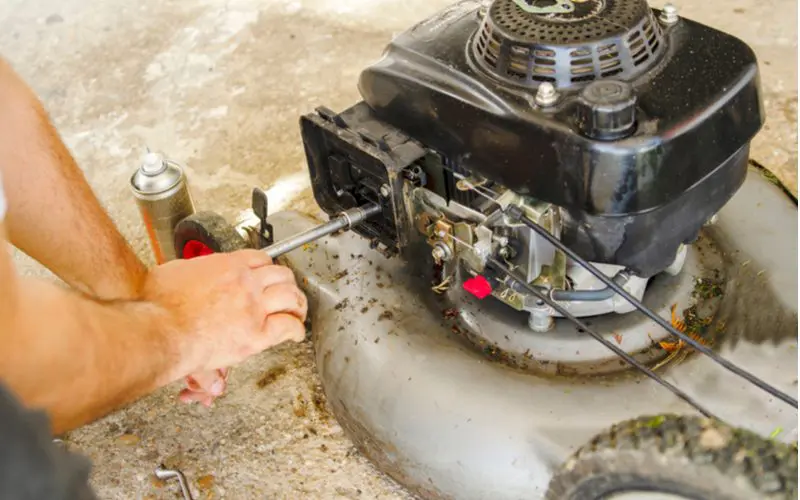
Pearl PhotoPix/Shutterstock
A dirty carburetor is the most common reason a lawn mower won’t continue running. Carburetors regulate the air and fuel mixture that creates internal combustion and powers the engine.
If the component is dirty, your lawnmower will display the following symptoms:
- Struggles to start
- Spits out black smoke
- Consumes more fuel than usual
- Runs rugged
Luckily, cleaning the carburetor can be done in eight simple steps.
- Locate the element by unscrewing the engine casing and removing the air filter. Depending on the model of your mower, it will sit behind or beneath the filter. Once you remove the filter, you’ll find the carburetor atop or beside the engine.
- Now that the carburetor is accessible, unbolt it from the engine. Place a rag or cup under the component because it will leak fuel.
- Remove the bowl (bottom of the carburetor) by unscrewing the bolt and holding it in place. The bowl holds fuel, so reposition your rag or jar beneath it.
- Once disassembled, evaluate the carburetor’s bolt. Notice that it has a jet and small holes that act as air intake valves. Together, they deliver fuel to the throttle, so it’s crucial they’re unobstructed.
- Cover the bolt with cleaner, then clear the intake valves with a small wire.
- Remove the rubber ring sitting between the bowl and the carburetor body. Detach the float by removing the small pin holding it in place. You might need pliers to pull out the pin.
- Now that you have dismantled the element, spray it with your cleaner. Clean all the holes with your small wire.
- Reassemble your mower and test its operation.
If you thoroughly cleaned the carburetor but your mower still stalls, inspect the spark plug.
4. Clean or Change the Spark Plug
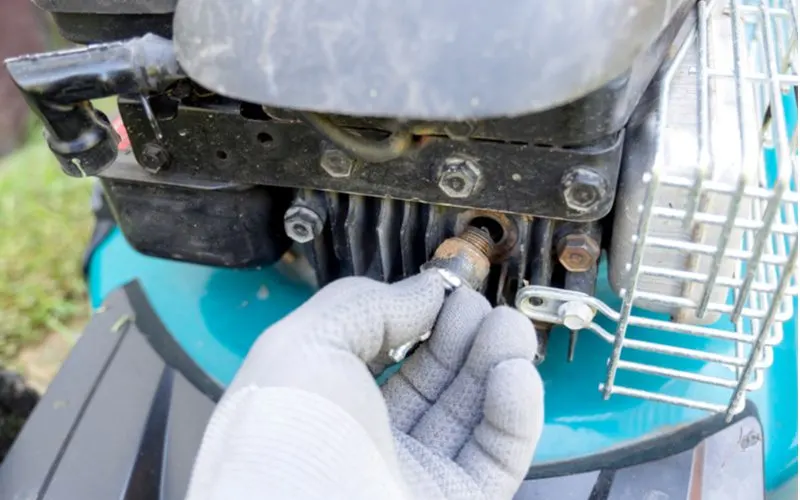
Alexsander Ovsyannikov/Shutterstock
Spark plugs ignite the air and fuel mixture that combusts and energizes the engine. If your mower’s spark plugs are dirty or faulty, the engine will fail.
Common signs include engine misfiring, difficulty starting, and increased gas consumption. First, you’ll need to determine if the component requires cleaning or replacement.
How to Diagnose a Bad Spark Plug
- Locate and disconnect the spark plug lead. It is usually a black cable plugged into the front of the lawnmower.
- Once disconnected, wipe away any debris surrounding the plug.
- Remove the spark plug with a spark plug socket. Evaluate the plug for stubborn residue, burned electrodes, a significant gap, or fractured ceramic. These signs equal replacement.
How to Replace a Spark Plug
- Determine the type of spark plug you need. The model number will be in your owner’s manual or on the plug’s ceramic.
- Once you find a new plug, adjust its gap with a spark plug gauge. Slide the gauge between the electrodes until it’s snug. If necessary, adjust the gap with the small hole at the top of your gauge. Simply pull the curved electrode down or up.
- Position the element on your mower. Turn it clockwise with your hand until the threads catch. Finish tightening the plug with a socket wrench. Avoid over-tightening, as the element is fragile.
- Reconnect the spark plug lead and test its performance.
Things to Consider
Keep these safety tips in mind when completing the above repairs.
- Turn off the engine and unplug the spark plug. Without a spark plug, the mower has no chance of starting.
- Don’t work near flammable items because gas and oil might leak during troubleshooting.
- Don’t work in confined spaces (i.e., a closed garage or shed). Fuel-operated machinery emits harmful fumes.
Frequently Asked Questions
Can You Clean a Carburetor Without Removing It?
The short answer is yes. However, leaving the carburetor on the engine won't thoroughly clear restrictions. Some sources recommend turning the engine on as you spray carb cleaner through the element. This tactic is dangerous and does not guarantee cleanliness.
Checking the carburetor for blockages requires disassembling it. Cleaning the carburetor without removing it is a partial clean and best after every use. Still, a thorough clean is necessary to adequately maintain the machine.
Why Does My Mower Die When it Gets Hot?
Vapor lock is the most common cause of an overheated lawnmower. Vapor lock is when hot fuel gets trapped in the tank. Instead of entering the carburetor, fuel evaporates.
Without fuel, the carburetor cannot facilitate internal combustion, so the engine stops. A broken or dirty gas tank cap is usually the cause of vapor lock.
When to Call a Pro
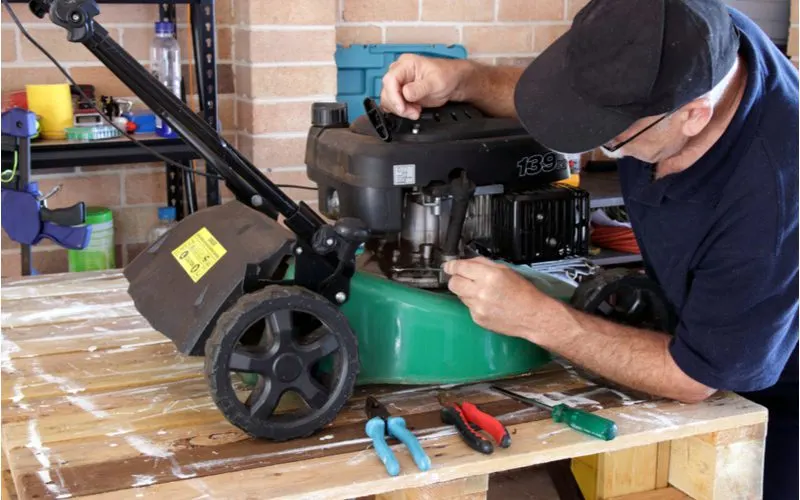
Douglas Cliff/Shutterstock
If the above suggestions don’t keep your mower running, consider calling the pros. Your machine might have a damaged element that is difficult to identify and restore alone.
Remember that working on fuel-operated machinery is extremely dangerous. Contact a professional if you are not comfortable or lack mechanical aptitude. A trained technician will keep you and your lawnmower in good shape.
You can even set up regular maintenance with a professional. They will complete the following for you as frequently as your model requires:
- Oil change
- Air and fuel filter replacement
- Spark plug installation
- Belt inspections
- Blade sharpens or swaps
How to Fix a Lawn Mower That Won’t Continue Running
If your lawnmower won’t stay operating, check your air filter, fuel quality, carburetor, and spark plug.
If you addressed these issues with no results, we suggest leaving it to the pros. A trained eye will save you time and prevent further damage.

